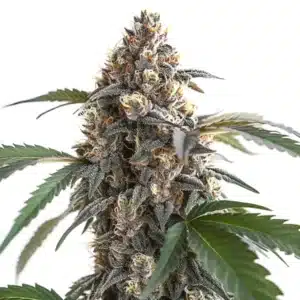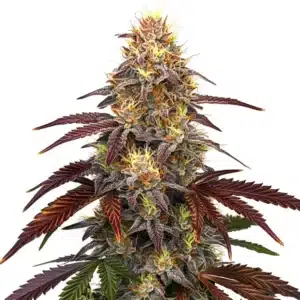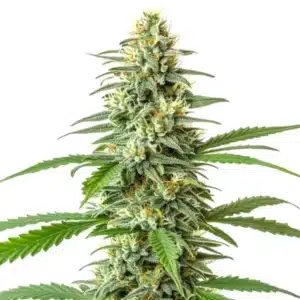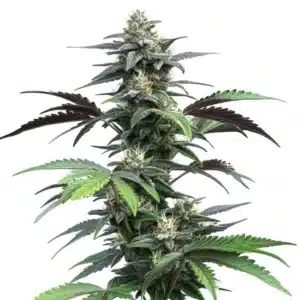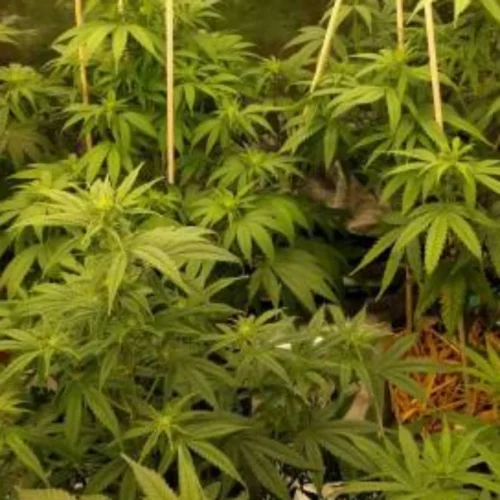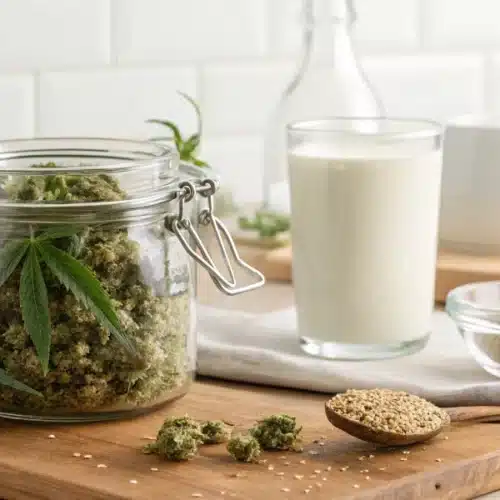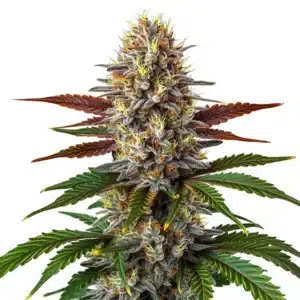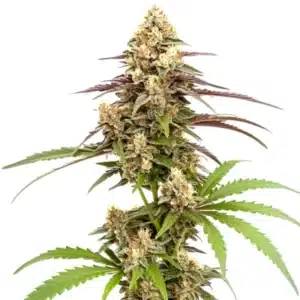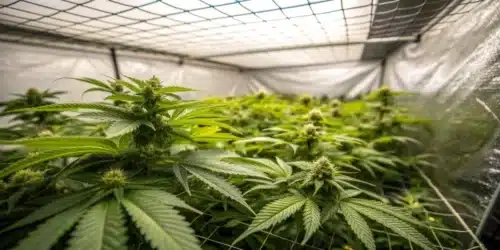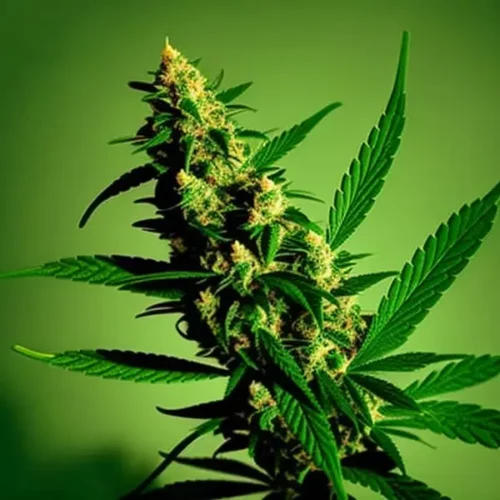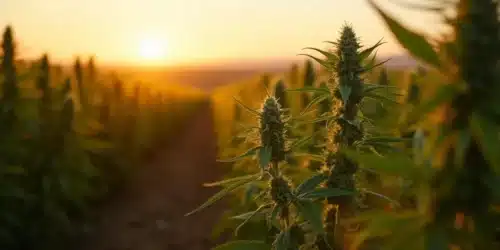Black Sugar Weed Strain Overview
Black Sugar Weed Strain is a highly sought-after cannabis variety known for its exceptional characteristics. This sugar strain weed is renowned for its high THC percentage, impressive yields, unique flavors, and versatile effects, making it a favorite among cannabis enthusiasts.
Recommended Strains
Black Sugar
 THC: 18 - 20%
THC: 18 - 20% Type of seed: Feminized
Type of seed: Feminized Phenotype: Mostly Indica
Phenotype: Mostly Indica Day to flower: 8 - 9 weeks
Day to flower: 8 - 9 weeks
Derived from a carefully selected combination of parent strains, Black Sugar Weed Strain exhibits robust and vigorous growth. Its buds are typically dense, resinous, and feature a striking appearance with dark green and purple hues. The trichome-covered buds emit a sweet and earthy aroma with hints of spice and berry, creating a memorable sensory experience.
Promos & Deals
Environmental Conditions for Growing Black Sugar Weed Strain
Creating the perfect environment for your Black Sugar Weed strain plants is crucial to ensure a successful cultivation process. The environmental requirements of this strain is essential for achieving optimal growth and development.
this Weed thrives in a temperate climate, with daytime temperatures ranging between 70-80°F (21-27°C) and slightly cooler at nights. Maintaining stable temperature and humidity levels within the growing area is essential to prevent stress and issues like mold or mildew.
Indoor growers should invest in high-quality LED grow lights or HPS lamps to provide adequate lighting for photosynthesis and bud development. During the vegetative phase, maintain a light cycle of 18-20 hours of light per day, and then switch to 12 hours of light and 12 hours of uninterrupted darkness to initiate flowering.
For outdoor cultivation, choose a location with abundant sunlight and a favorable climate. this Weed thrives in sunny and warm environments, allowing it to reach its full potential. In regions with cooler climates, consider using a greenhouse or providing additional protection to extend the growing season and safeguard your plants from adverse weather conditions.
Setting Up Your Cannabis Growing Space
Before embarking on your this strain cultivation journey, it’s essential to establish an efficient and well-organized growing space. Whether you choose indoor or outdoor cultivation, consider the following factors:
Indoor Cannabis Cultivation
For indoor cultivation of this Weed, selecting the right grow tent or dedicated grow room is crucial. Ensure the space provides sufficient vertical room for plant growth and has proper ventilation for fresh airflow. Install an efficient exhaust system with a carbon filter to control odors and prevent heat or humidity buildup. Maximize light distribution by using reflective materials or Mylar sheets to avoid light leaks that could disrupt the flowering phase.
Select a suitable growing medium for your Black Sugar Weed, such as high-quality soil or a hydroponic system, depending on your preferences and experience. Ensure proper drainage to prevent overwatering and maintain a balanced pH level of around 6.0-6.5 for optimal nutrient absorption.
Outdoor Cannabis Cultivation
When cultivating your Black Sugar Weed outdoors, choose a location with ample sunlight and suitable soil conditions. Ensure the soil is well-draining and rich in organic matter. Consider using large containers or fabric pots to have better control over soil quality and root health. Protect your plants from strong winds by placing them near a fence or using windbreaks.
Use stakes or trellises to support the branches of those plants. This prevents bending or breaking under the weight of dense buds and promotes better airflow.
Propagation and Germination
Successful germination and propagation are essential for healthy and robust Black Sugar strain plants. Follow these steps to ensure a high germination rate and successful propagation:
1. Start by obtaining high-quality Black Sugar seeds from a reputable seed bank like Blimburn Seeds to ensure genetic stability.
2. Initiate the germination process by soaking the seeds in distilled water or a damp paper towel for 24-48 hours. Maintain a temperature between 70-85°F (21-29°C) in a dark and undisturbed environment.
3. Once the seeds have developed taproots, carefully transfer them to a pre-moistened growing medium, such as a seedling tray or small pots filled with a light and well-draining soil mix.
4. Place the seeds in a warm and humid environment with gentle airflow. Maintain a temperature around 75-80°F (24-27°C) and a humidity level of 60-70% for optimal germination.
5. Provide indirect light to the seedlings during the first few days, gradually increasing the light intensity as they develop. Avoid exposing them to intense light or heat that could cause stress or damage.
6. Once the seedlings have grown a few sets of true leaves, they are ready to be transplanted into larger pots or their final growing containers.
Following these germination and propagation steps will provide a strong foundation for healthy Black Sugar plants and ensure a successful start to your cultivation journey.
Vegetative Phase of Black Sugar Weed Strain
The vegetative phase is a crucial stage in the development of your Balck Sugar Marijuana plants. Here are some key considerations during this phase:
Lighting: Provide those plants with 18-20 hours of light per day to promote vigorous vegetative growth. High-quality LED grow lights or HPS lamps are recommended to ensure sufficient light intensity and spectral distribution.
Nutrition: During the vegetative phase, your Black Sugar marijuana plants require a balanced and nutrient-rich diet. Use a reputable cannabis fertilizer with a higher nitrogen (N) content to encourage healthy leaf and stem growth. Follow the manufacturer’s instructions and monitor the plants for any signs of nutrient deficiencies or excesses.
Watering: Water your plants when the top inch of the soil feels dry. Avoid overwatering, as it can lead to root rot and other moisture-related issues. Allow the soil to dry out slightly between watering sessions, but ensure the plants do not experience extreme drought.
Training: Consider employing training techniques such as low-stress training (LST) or topping to control the height and shape of your Black Sugar Weed strain plants. These methods help create an even canopy, increase light penetration, and promote better bud development.
Pruning: Remove any lower branches or leaves that receive little light or show signs of disease or pests. This improves airflow and reduces the risk of mold or mildew formation.
By providing Black Sugar Marijuana strain plants with the right environmental conditions, nutrition, and care during the vegetative phase, you can establish healthy and robust plants ready for the flowering stage.
Flowering Phase of Black Sugar Weed Strain
The flowering phase is the most anticipated stage of growing Black Sugar marijuana, as it is when the plants develop their characteristic buds. Here’s what you need to know:
Lighting: Adjust the light cycle to 12 hours of light and 12 hours of uninterrupted darkness to initiate the flowering phase. Use a timer to maintain a consistent light schedule. During this stage, your Black Sugar marijuana plants require intense light, so ensure your grow lights provide adequate coverage and maintain the appropriate distance from the canopy.
Nutrition: Transition from a nutrient formula higher in nitrogen to a bloom or flowering-specific nutrient formula. These formulations are generally higher in phosphorus (P) and potassium (K), which promote bud development and overall flowering performance. Monitor the plants closely and adjust nutrient levels as needed to avoid deficiencies or toxicities.
Temperature and Humidity: Maintain a slightly lower temperature during the flowering phase, ideally around 65-75°F (18-24°C), to encourage resin production and prevent heat-related stress. As for humidity, aim for levels around 40-50% to minimize the risk of mold or bud rot.
Support: As your Black Sugar marijuana plants enter the flowering phase, the weight of the developing buds may cause branches to bend or break. Provide adequate support using stakes or trellises to ensure the plants can bear the weight and avoid bud damage.
Flowering Time: The Black Sugar strain typically has a flowering time of 8-10 weeks, but this can vary depending on the specific phenotype and environmental conditions. Monitor trichome development using a magnifying tool to determine the optimal harvest window.
Throughout the flowering phase, maintain a vigilant eye for any signs of pests or diseases. Implement proper pest management practices and take immediate action at the first sight of infestation or abnormalities.

Cannabis Fertilization and Nutrition for Black Sugar Weed Strain
Proper nutrition and fertilization are crucial for maximizing the growth, yield, and overall health of your Black Sugar marijuana plants. Consider the following tips:
Choosing the Right Fertilizer: Select a high-quality cannabis-specific fertilizer or nutrient line that provides a balanced blend of macro and micronutrients. Look for products rich in nitrogen (N), phosphorus (P), and potassium (K) to support healthy growth, root development, and bud formation.
Feeding Schedule: Follow the manufacturer’s instructions and adjust the feeding schedule based on your plants’ specific needs. Start with a lower concentration and gradually increase it as the plants progress through their growth stages. Monitor the plants closely for any signs of nutrient deficiencies or excesses, and make adjustments accordingly.
Supplements and Additives: Consider incorporating supplements and additives into your feeding regimen to enhance specific aspects of plant development. These may include bloom boosters, beneficial microbes, enzymes, or organic amendments that improve soil structure and nutrient availability.
Regularly monitor your plants’ response to the feeding program, adjusting nutrient concentrations and frequencies as needed. Remember to flush the plants with pure water during the final weeks of the flowering phase to remove any excess salts or nutrients, which can affect the flavor and overall quality of the final harvest.
Pest and Disease Control for Growing
While the Black Sugar strain is known for its resilience, it is still susceptible to pests and diseases. Implementing proper pest and disease control measures is crucial to protect your plants and ensure a successful cultivation. Here are some preventive and corrective actions:
Prevention:
- Regularly inspect your plants for any signs of pests, such as spider mites, aphids, or thrips. Early detection is key to preventing a full-blown infestation.
- Maintain a clean and tidy growing space, removing any dead plant material or debris that could harbor pests or pathogens.
- Introduce beneficial insects, such as ladybugs or predatory mites, to your garden to help control pests naturally.
- Ensure proper airflow and ventilation in the growing space to reduce the risk of mold or mildew formation.
- Quarantine new plants or clones before introducing them into your growing area to prevent the spread of pests or diseases.
Corrective Actions:
- If you detect pests, use organic or low-toxicity pest control products specifically formulated for cannabis. Follow the instructions carefully and avoid using harsh chemicals that can compromise the quality of your harvest.
- For common fungal diseases like powdery mildew or botrytis, remove infected plant material, increase airflow, and consider using organic fungicides or natural remedies such as neem oil or a milk spray solution.
- When dealing with severe infestations or persistent diseases, consult with a professional grower or horticulturist for tailored advice and appropriate solutions.
Regularly monitoring your Blakc Sugar marijuana plants for any signs of pests or diseases and taking immediate action when needed is essential to safeguard your crop and ensure a successful harvest.
Harvesting and Curing Your Black Sugar Weed Crop
Harvesting your Black Sugar marijuana crops at the right time and properly curing the buds are crucial steps to preserve their aroma, flavor, and potency. Follow these guidelines:
Trichome Maturity: Use a magnifying tool to examine the trichomes on the buds. Wait until they have reached their desired maturity, indicated by a milky or cloudy appearance with some amber trichomes. This ensures the optimal balance of cannabinoids and terpenes.
Harvesting:
- When the trichomes have reached the desired maturity, it’s time to harvest those plants. Use clean, sharp scissors or pruning shears to carefully cut the branches with the buds attached.
- Handle the buds gently to avoid damaging the delicate trichomes and terpenes. It’s crucial to minimize physical contact during this process.
- Trim any excess leaves from the harvested branches to improve airflow and enhance the appearance of the buds.
Curing:
- After harvesting and trimming, it’s essential to cure your Black Sugar marijuana buds to preserve their quality and flavor. Place the trimmed buds in glass jars with airtight lids.
- Store the jars in a cool, dark, and dry place with a consistent temperature of around 60-70°F (15-21°C) and a humidity level of 55-65%. Use hygrometers to monitor humidity levels inside the jars.
- During the curing process, open the jars for a few minutes daily to allow fresh air to circulate and release any excess moisture. This helps prevent mold and ensures a slow and controlled curing process.
- Cure those buds for at least two weeks, but many growers prefer a longer curing period of 4-8 weeks to achieve the best flavor and aroma profiles.
- Regularly check the buds for any signs of mold or mildew during curing. If you notice any issues, remove affected buds immediately to prevent contamination of the entire batch.
Properly harvested and cured Black Sugar buds will develop a complex flavor profile, potency, and aroma that will be highly enjoyable when consumed. Take your time with the curing process to achieve the best results.
Is Black Sugar an Indica or Sativa Weed Strain?
Black Sugar marijuana strain is an Indica-dominant hybrid cannabis strain. It exhibits characteristics typical of Indica strains, such as a relaxing and sedating effect on the body. However, it also offers a well-balanced experience with some Sativa influence, providing euphoria and mental clarity. This balance of Indica and Sativa genetics contributes to Black Sugar Weed’s popularity and versatility among cannabis enthusiasts.
Advantages of Growing Black Sugar Weed Strain
Growing Black Sugar weed offers several advantages to both novice and experienced cultivators:
- High THC Content: This Weed is known for its high THC percentage, and the sugar THC levels in this strain make it a potent option that can provide strong therapeutic effects.
- Good Yields: This strain is capable of producing impressive yields, making it a rewarding choice for growers looking for a bountiful harvest.
- Unique Flavor Profile: This Weed boasts a distinctive flavor profile with sweet, earthy, and spicy notes, enhanced by hints of berry. It provides a delightful sensory experience when consumed.
- Versatile Effects: The hybrid nature of this Strain delivers a balanced combination of relaxation and euphoria, making it suitable for both recreational and medicinal use.
- Resilience: This Weed is known for its resilience to pests and diseases, making it a robust and reliable strain for cultivation.
Disadvantages of Growing Black Sugar Weed Strain
While Black Sugar weed offers many advantages, there are also some potential disadvantages to consider:
- Odor Control: Black Sugar marijuana plants can emit a strong and pungent aroma during the flowering phase, which may require effective odor control measures for discreet cultivation.
- Space Requirements: those plants can grow tall and bushy, requiring ample vertical space for indoor cultivation. Outdoor growers may also need to manage plant size to prevent visibility issues.
- Monitoring: Like all cannabis strains, Black Sugar weed plants require regular monitoring for pests, diseases, and nutrient management, which can be time-consuming.
- Legality: The cultivation and use of cannabis are subject to legal regulations in many regions. Ensure you are compliant with local laws and regulations regarding cannabis cultivation.
While these disadvantages may pose challenges, many growers find that the benefits of cultivating Black Sugar cannabis seeds outweigh the drawbacks.
Common Challenges in Cultivating
While Black Sugar Weed Strain is known for its resilience, growers may encounter specific challenges during cultivation. Some common issues include:
- Pest Infestations: Despite its resistance, this Weed can still be susceptible to pests like spider mites or aphids. Regular monitoring and preventive measures are essential.
- Fungal Diseases: High humidity levels or poor ventilation can lead to fungal diseases such as powdery mildew. Proper environmental control is critical to prevent such issues.
- Nutrient Imbalances: Over or underfeeding your plants can result in nutrient imbalances, leading to nutrient deficiencies or toxicities. Careful monitoring and balanced nutrition are necessary.
- Odor Control: The strong aroma of Black Sugar Weed strain can be challenging to manage, particularly for indoor growers. Effective odor control methods are essential for discreet cultivation.
- Legality: Depending on your location, the cultivation of cannabis may be subject to legal restrictions. Ensure you are aware of and compliant with local laws and regulations.
By addressing these common challenges proactively, you can significantly improve your chances of successfully cultivating Black Sugar Weed Strain and achieving a bountiful harvest of top-quality buds.
Why Buy Black Sugar Weed Strain Seeds
If you’re considering cultivating Black Sugar Weed Strain, buying seeds from a reputable seed bank, like Blimburn Seeds is essential for several reasons:
- Genetic Stability: Reputable seed banks ensure genetic stability, providing you with authentic Black Sugar Weed strain genetics and minimizing the risk of genetic abnormalities.
- Quality Assurance: Established seed banks often test and select their seeds for viability, ensuring you receive healthy and viable seeds that are more likely to germinate successfully.
- Strain Variants: Some seed banks may offer different phenotypes or variants of Black Sugar Weed Strain, allowing you to explore various characteristics and effects within the same strain.
- Customer Support: Reputable seed banks typically offer customer support and guidance, helping you throughout your cultivation journey.
- Discreet Shipping: Many seed banks offer discreet and secure shipping options, providing privacy and convenience when ordering seeds.

FAQs about Black Sugar Weed Strain
What are the ideal growing conditions for Black Sugar Weed Strain?
Ideal growing conditions for Black Sugar Weed Strain require a warm, stable environment with daytime temperatures between 70°F and 80°F and slightly cooler nights. The strain thrives in well-draining, nutrient-rich soil with consistent light exposure. Adequate ventilation and moderate humidity levels help prevent mold and pest issues. Maintaining these parameters ensures vigorous growth, enhanced resin production, and robust bud development throughout the cultivation process.
How can I manage the flowering phase for Black Sugar Weed Strain?
During the flowering phase, adjust your light cycle to 12 hours of darkness and 12 hours of high-intensity light to stimulate bud formation. Switch to a bloom nutrient formula rich in phosphorus and potassium to support flower development. Monitor temperature and humidity carefully to prevent mold and stress. Using training techniques and branch support improves yield quality and structure, ensuring a healthy, abundant flowering period.
What common challenges should I expect when growing Black Sugar Weed Strain?
Common challenges with Black Sugar Weed Strain include managing high humidity, controlling pests, and ensuring nutrient delivery. Temperature fluctuations and inadequate lighting can stress plants, reducing bud quality and yield. Overwatering may cause root rot, while poor ventilation can lead to mold. Regular monitoring and adjustments in environmental conditions are essential to overcome these issues and maintain a healthy, productive cultivation cycle for maximum yield.


